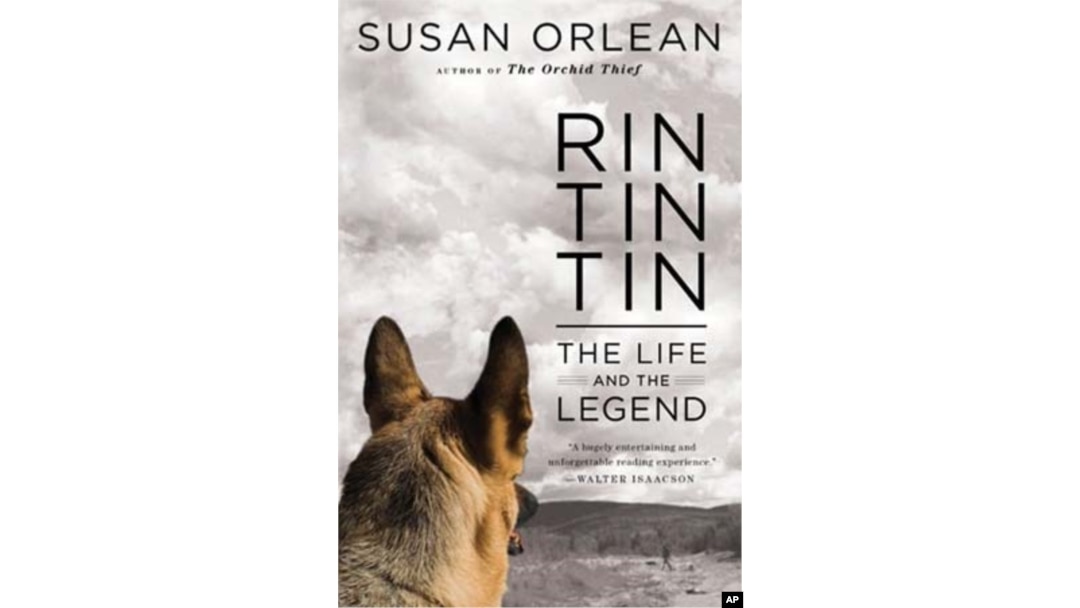Rin Tin Tin, a dog rescued from a World War I battlefield in France, became a famous animal star and hero for generations of children.

"Rin Tin Tin: The Life and the Legend" looks into the life of the dog that because a huge US star after being rescued from a French battlefield.
Susan Orlean, author of "Rin Tin Tin: The Life and the Legend," has vivid memories of the German Shepherd from her 1950s childhood, when the animal performed daring rescues on a television series.
But as she prepared a magazine story on animals in film, she discovered a surprising fact about the canine actor.
“What I had thought was a 1950s television character had been a real dog with an extraordinary life story,” Orlean says.
She learned the real story began in 1918, when an American army corporal named Lee Duncan rescued two puppies from a bombed-out kennel in France. He named them Nanette and Rin Tin Tin, after the dolls French children gave American soldiers for good luck.
After the war, Duncan brought the dogs back to his California home. Nanette died of pneumonia soon afterwards, while Rin Tin Tin settled in with Duncan.
One of Duncan’s friends, who'd developed a slow-motion movie camera, filmed Rin Tin Tin making a spectacular leap over a three-and-a-half meter tall fence.
Duncan's friend sold the film to the newsreel company, Novagraph, according to Orlean.

Susan Orlean, author of the book "Rin Tin Tin: The Life and the Legend"
“Lee knew nothing about it," she says. "All he knew was that a few weeks after the dog show, he got a check in the mail from Novagraph for this footage of Rin Tin Tin. That was the moment where he thought, 'Wow, maybe there is something to this. Maybe my dog could be in movies.'”
Rin Tin Tin broke into show business in 1922, playing the role of a wolf in the silent film "The Man from Hell’s River." He went on to star in more than two dozen films, earning a higher salary than his human costars.
Like many stars of the silent film era, Rin Tin Tin’s career began to fade after talking films arrived in the late 1920s, but he and his descendants continued to perform in low-budget films and on radio. The TV shows Orlean watched as a child in the 1950s featured Rin Tin Tin II in a series set in the Old West.
Rin Tin Tin also played a special role in World War II, when the U.S. War Department saw the need for a K-9 Corps and recruited dogs to carry messages, stand guard duty and sniff out landmines.
“Where do you find 300,000 adult dogs? You turn to the public, and you ask them to donate their dogs," Orlean says. "So the dogs that participated in World War II were people's pets.”
Rin Tin Tin became a mascot for the military effort.
Orlean says animal heroes like Rin Tin Tin have something to teach us because they display virtues admired by people around the world.
One of Rin Tin Tin's descendants serves as an ambassador for the American Humane Association's Hero Dog Awards, which honor dogs that help people in need.
“Loyalty, bravery, sympathy, empathy and steadfastness that is appealing to people everywhere and doesn't have a kind of national identity. Rin Tin Tin was uniquely that way. He was a German breed of dog, born on a battlefield in France, but became a star in America.”
And the most famous dog in the world.
Rin Tin Tin sired at least 44 puppies and has thousands of descendents. A family in Texas is carrying on the legacy, by still breeding his offspring.
Some of them perform and others have been trained for public service, including work as rescue dogs and therapy animals for children with autism.

